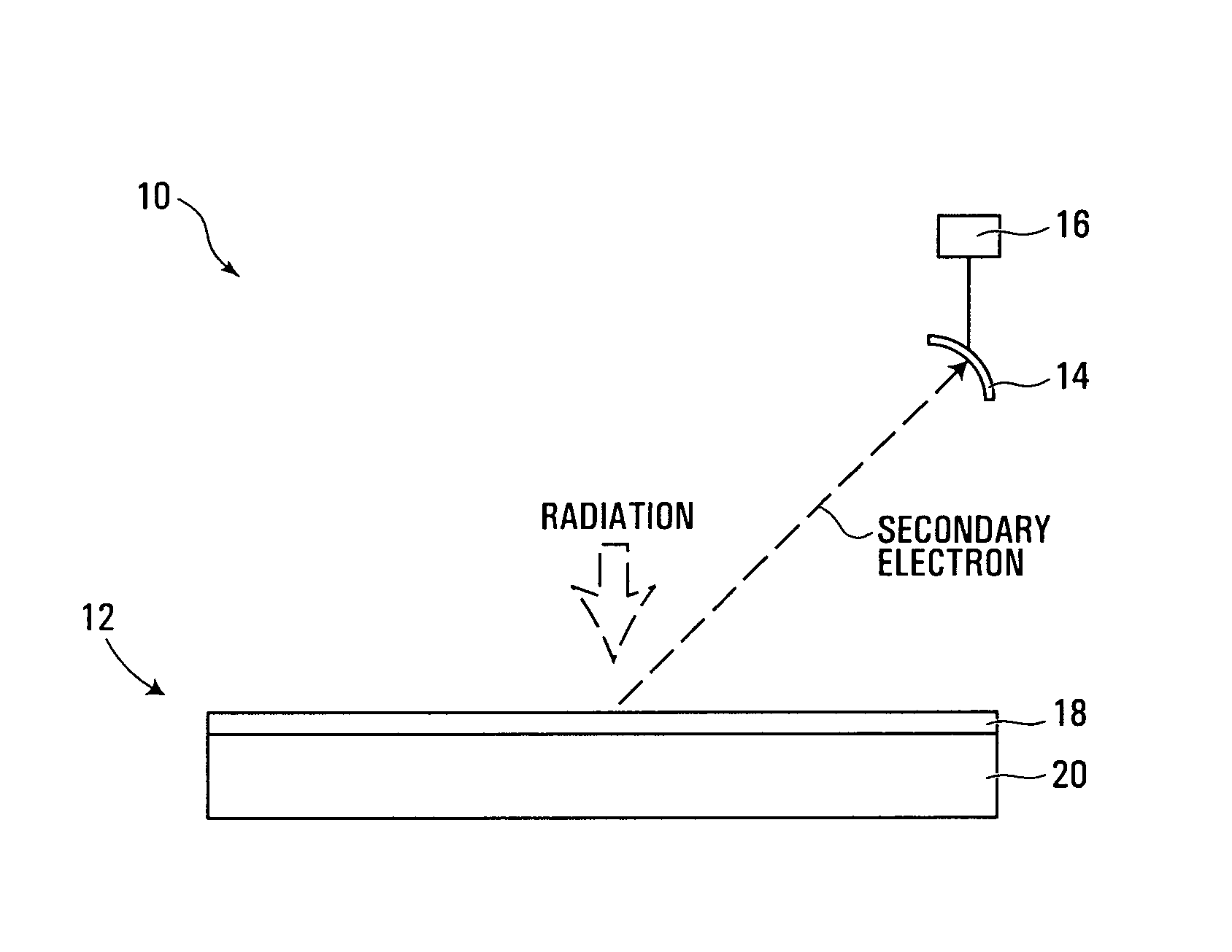Radiation detector having coated nanostructure and method
a technology of nanostructure and radiation detector, which is applied in the direction of radiation measurement, optical radiation measurement, particle separator tubes, etc., can solve the problems of low detection efficiency of boron-doped diamond films, and low detection efficiency of light radiation such as x-rays
- Summary
- Abstract
- Description
- Claims
- Application Information
AI Technical Summary
Benefits of technology
Problems solved by technology
Method used
Image
Examples
Embodiment Construction
[0025]FIG. 1 is a simplified schematic diagram of a radiation detector 10, exemplary of an embodiment of the invention. Detector 10 includes an electron emitter 12, an electron collector 14 and a signal processor 16. As used herein, a radiation detector includes any radiation based detecting, sensing, or imaging device.
[0026]Electron emitter 12 has an emitting structure 18 formed on a support 20, which can emit secondary electrons under radiation of charged particles, photons or an electromagnetic wave. Charged particles can be electrons, protons, ions, and the like. Photon radiation can be light in UV portion of the spectrum, and the like. Electromagnetic radiation can be X-ray radiation and the like.
[0027]FIG. 2 illustrates an exemplary emitter 12. Emitting structure 18 is formed on a supporting surface 22 of substrate or support 20. Substrate 20 can be made from any suitable material on which emitting structure 18 can be formed, which will be described further below. Suitable mat...
PUM
| Property | Measurement | Unit |
|---|---|---|
| length | aaaaa | aaaaa |
| diameter | aaaaa | aaaaa |
| diameter | aaaaa | aaaaa |
Abstract
Description
Claims
Application Information
 Login to View More
Login to View More - R&D
- Intellectual Property
- Life Sciences
- Materials
- Tech Scout
- Unparalleled Data Quality
- Higher Quality Content
- 60% Fewer Hallucinations
Browse by: Latest US Patents, China's latest patents, Technical Efficacy Thesaurus, Application Domain, Technology Topic, Popular Technical Reports.
© 2025 PatSnap. All rights reserved.Legal|Privacy policy|Modern Slavery Act Transparency Statement|Sitemap|About US| Contact US: help@patsnap.com



